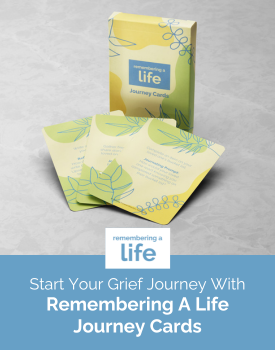There are many options for making final arrangements that reflect the personal preferences of individuals and their loved ones. This personal narrative reflects one person's journey to learn more about the option of green burial.
During recent weeks, COVID-19 has been dominating the headlines, our thoughts and the medical and funeral professions. It has been hard to think of much else.
End-of-life care in so many places in the US has been radically altered, at least for now. We are not free to be with loved ones in hospitals and nursing homes, or during visitations, funerals and memorials. The old rules don’t apply. So many of us are having to say goodbye and grieve without the presence and physical support we would normally receive from friends and family.
As much disruption as we are currently experiencing, I think it is safe to assume that we will return to normal, or at least a “new normal,” some weeks or months from now. And when we do, we will once again have a wide range of funeral and memorialization options from which to choose.
Until a couple of years ago when I began thinking of end-of-life issues more critically, I had planned to be cremated, and interred with my wife, in a small cemetery on an island in Maine. I can think of worse places to spend eternity. (The seafood is great!)
Recently, as I have had the opportunity to visit cremation facilities, I am finding cremation a much less appealing option - it feels harsh to me. At the same time, I don’t want a fancy mahogany, or shiny blue metal box - it doesn't express who I am. What to do? What to do?
Enter Green Burial.
There are several reasons typically given as to why someone might choose green burial: more environmentally friendly, less expensive and more natural. What I have seen mentioned less often, and what I have experienced most profoundly, is a sense of intimacy. Although my experience is limited to a few green burials, I have found that the simplicity, gentleness and honesty of green burial creates a feeling of intimacy I have never experienced at other funerals. This intimacy extends to the deceased, my fellow mourners and the notion of death itself.
Recently I attended the burial of a friend's father - a man I did not know - at Honey Creek Woodlands, a green cemetery located 20 miles outside of Atlanta. Honey Creek Woodlands is a memorial nature preserve located among 2300 acres comprising the Monastery of the Holy Spirit.
The funeral took place on a wet, windy, early spring day. It had been raining hard in the morning, and the ground was soggy, but the clouds lifted around noon and stayed away during the early afternoon graveside service and burial.
For most of the 15 people attending, this was their first exposure to green burial, and they clearly did not know what to expect. This was evident by the blue suits and heels that most of the guests were wearing. (Not that it needs to be clarified, but the men were wearing the blue suits and the women the heels.)
The main event kicked off with folks from the cemetery gathering the group together to share a little background on the concept of green burial, Honey Creek Woodlands itself and the service we would soon be participating in. We then began the mile-long trek down a dirt road in a small convoy of cars, SUVs and a gas-powered golf cart. Driving through the woods and crossing the swollen Honey Creek on a narrow bridge, it was hard to remember that we were in a cemetery and not on a Sunday drive along a back-country road.
Arriving at the grave site after a short walk from the road - or hike depending on who you ask - we found the modest hand-dug grave, a pile of red clay fill dirt and a shrouded body surrounded by flowers. The immediate impact of seeing the shrouded body was to confirm the humanness of the deceased. Before us lay a man, not a box. The grave diggers and funeral director were standing against a clump of trees a respectful distance back from the grave.
The service began with a simple greeting and prayer, followed by a heartfelt, extemporaneous eulogy from the son. Guests were then invited to share and a few did. The mood of the group was reflective and calm, the pace of the service, unhurried After the body was lowered into the grave, we were each invited to place three shovels full of dirt on the body, as is Jewish custom. The Rabbi then led the group in the traditional Mourner's Kaddish prayer and we slowly made our way back to the vehicles. As the Rabbi recalled later, the dirt made no noise as it landed on the shrouded body, as opposed to the disquieting “thud” of dirt hitting a casket from a height of 5 feet.
Reflecting on the graveside experience, there was no fancy casket, no mechanical equipment or green AstroTurf surrounding the grave. Just a man wrapped in a shroud, on a buckboard, being gently lowered by straps to his final resting place by his loving son and friends. Simple, gentle, honest and intimate.
This may not be for everyone, but it just may be for me…
When it was over, I walked the mile backup up the dirt road on a wet spring afternoon with my friend Max, and we shared how meaningful the experience had been for both of us. Btw, we weren’t wearing heels.

